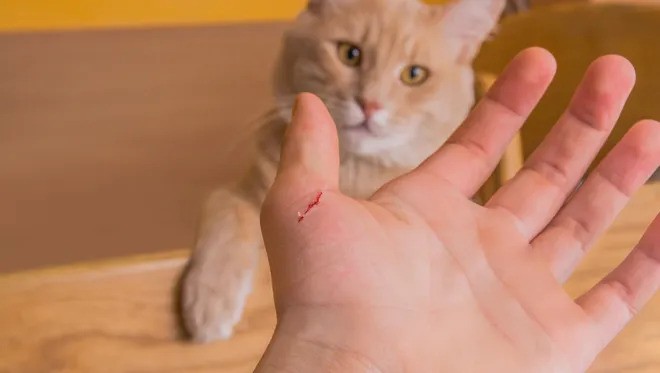
Introduction:
Cats are beloved companions, providing comfort and joy to millions of households. However, it's essential to be aware of potential health risks associated with our feline friends. One such concern is Cat Scratch Disease (CSD), a bacterial infection that can be transmitted to humans through scratches or bites from infected cats. In this blog post, we'll explore what Cat Scratch Disease is, its causes, symptoms, and how to minimize the risk of contracting this potentially serious illness from our beloved pets.
Understanding Cat Scratch Disease:
Cat Scratch Disease is caused by the bacterium Bartonella henselae, which is often present in the saliva of infected cats. While many cats carry the bacteria without showing symptoms, it can still be transmitted to humans through scratches or bites, particularly when the skin is broken.
Causes and Transmission:
Scratches and Bites: The primary mode of transmission is through scratches or bites from an infected cat. The bacteria can be present in the cat's claws and mouth.
Kitten Play: Kittens are more likely to carry the bacteria, and their playful behavior, including scratching and biting during play, increases the risk of transmission.
Symptoms of Cat Scratch Disease:
Cat Scratch Disease typically presents with the following symptoms:
Swollen Lymph Nodes: The most common symptom is the development of swollen and tender lymph nodes near the site of the scratch or bite.
Fever and Fatigue: Some individuals may experience fever, fatigue, headache, and a general feeling of malaise.
Skin Lesions: A red bump or blister may appear at the site of the scratch or bite.
Minimizing the Risk:
Regular Veterinary Care:
Ensure your cat receives regular veterinary check-ups and vaccinations to maintain good health.
Avoid Rough Play:
Teach children and family members to avoid rough play with cats, especially kittens, to minimize the risk of scratches and bites.
Handwashing:
Wash your hands thoroughly after interacting with cats, especially before touching your face or eating.
Flea Control:
Since fleas can carry the Bartonella bacteria, use flea control measures to prevent infestations in your cats and home.
Avoid Agitation:
Avoid agitating or startling cats, as this may increase the likelihood of defensive scratching or biting.
When to Seek Medical Attention:
If you experience symptoms of Cat Scratch Disease, such as swollen lymph nodes or skin lesions, it's crucial to seek medical attention promptly. In severe cases, complications may arise, and antibiotic treatment may be necessary.
Conclusion:
While the risk of Cat Scratch Disease is relatively low, being informed about the potential dangers and taking preventive measures can help ensure a harmonious relationship between humans and their feline companions. Responsible pet ownership, regular veterinary care, and proper hygiene practices can go a long way in minimizing the risk of Cat Scratch Disease and keeping both you and your cat healthy and happy.